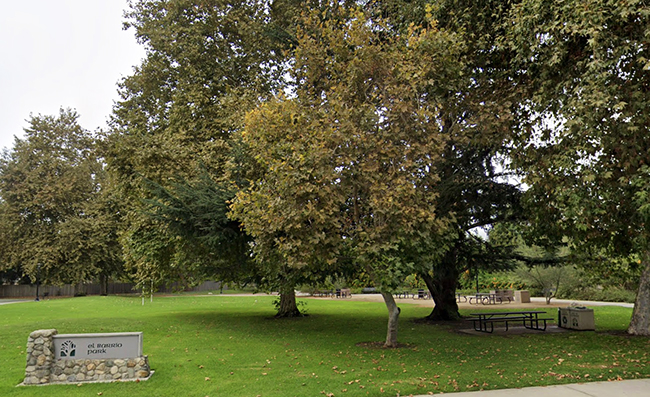When public art polarized
by John Neiuber
It is often written and talked about that we are a divided nation — polarized, unwilling to listen to each other. People get angry about issues and that anger gives them courage to write or say almost anything. We like to think that sort of thing doesn’t happen in our community, but it does. Take these comments, for example, about an issue surrounding public art here in Claremont.
“If this is art I hate it. This is pathetic! It’s stupid! Get a new profession, please!”
“For an ‘art’ town, there sure seems to be a lot of misdirected hatred towards an honest attempt. I thought this was Claremont, not Rancho Cucamonga.”
“Since this is a crime compounded — it is a felony. The [sponsors] need to be fined $25,000 and given a 6-month jail term.”
“Claremont is so provincial! So great to have your piece to shake ‘Clareville’ up.”
“This is ugly and a big joke. Artist is a title you have to earn. Get real and get a real job. And one last piece of advice: grow up you hippie-chick.”
“How ironic that the critics of this piece, and the vandals, seem not to understand the concept.”
“I can’t believe you got $25,000 for this piece of crap. I think my dog expressed it best when it took a dump by the picnic table.”
“I think it’s quite interesting and a good idea to invade the incredibly self-centered space of Claremonters.”
“You would ruin our beautiful city with this piece of s—!! If there is anyone stupid enough in this city to call this art I’ve got a bridge to sell them. Please express your artistic talents in some other way (like bathroom stall graffiti).”
The above seems a bit tame in comparison to the vitriol we experience on social media, but community standards prohibit me from publishing the worst of the comments and, believe me, there are much worse. They contain strings of expletives, with sexist and misogynistic references to describe the artist and her work. The above examples give one the impression that the comments were evenly divided for and against this work, but of the over 250 comments received, they ran about 80% against.
So where is this controversial installation of public art located and where can one see it? The comments concern an art installation from 1991 in what is now Shelton Park, but was a lot owned by Pomona College then. The installation was by artist Donna Williams, titled “Negotiated Settlement.”
The temporary installation was sponsored by the now defunct Claremont Community Foundation and the Claremont Chamber of Commerce and was selected in a competition. The installation did not cost $25,000 as the wildly inaccurate written comment above (any many others) stated. The artist was paid approximately $3,000 and the “unlucky” applicants were given a stipend of $200 each for their submittals.
Donna Williams, 34 at the time, had earned her master’s degree at Claremont Graduate School in 1986. An article in the Los Angeles Times, “Public Artwork Draws Violent Critique,” stated the installation took place in May and although it was scheduled to be removed on July 15, the calls for instant removal were many. The site was a 100 by 175 foot lot. The installation consisted of a picnic table in the center of a pathway that was lined with 425 feet of olive and rust colored nylon fencing stretched across seven-foot high steel posts. Shortly after installation it was vandalized when someone slashed about 50 feet of the fencing and carved “Take it down now” into the wooden table.
Joe Unis, was the chairman of the foundation’s public art committee at the time and said, “Claremont is a sophisticated, educated town that has a lot of diversity and people can argue about the smallest things.” He, however, didn’t expect the vandalism. He said that it was out of the ordinary for Claremont.
And in keeping with how misinformation seems to inform so much of opinion, critics of the artwork blamed the city governance for funding it and misspending the taxpayers’ dollars. The executive director of the foundation at the time was Mary Weis, who explained that it was funded by a grant and private donations.
The community foundation had actually decided to stage the temporary installation as a way of introducing Claremont to the concept of public art. Williams knew it was going to be controversial from the beginning, especially when she was installing it and passersby asked her where the art was and if she was going to hang paintings on the fence.
On the storyboard at the entrance to the installation Williams said her piece “is designed to focus a space without purpose and illustrate the concept of negotiating one’s path through life … Negotiated Settlement is intended to address the issues of compromise, cooperation and respect for the unknown—the individual’s responsibility to create meaning out of ambiguousness.”
Unis believed that Williams executed her concept brilliantly. He stated that he loved it. He said, “It takes courage to come this far to the table to see your opponent and sit down and talk.”
Williams returned to repair the damage to the piece which cost $250. She said that the vandalism was “Fairly indicative of an attitude that’s commonplace today. People want a quick fix. They don’t want discussion; they don’t want deliberation; they don’t want the tension and anxiety that come from actually having to think about something. They don’t want to compromise.”
That was 30 years ago. The comments received from the foundation were written on paper left at the site for observers to share their views of the artwork. Keeping in mind the old adage that the more things change the more they stay the same, today it would be hundreds if not thousands of posts on social media or in response to a QR code at the installation. Evidently this polarization is not new, just more widely shared via social media now.









0 Comments